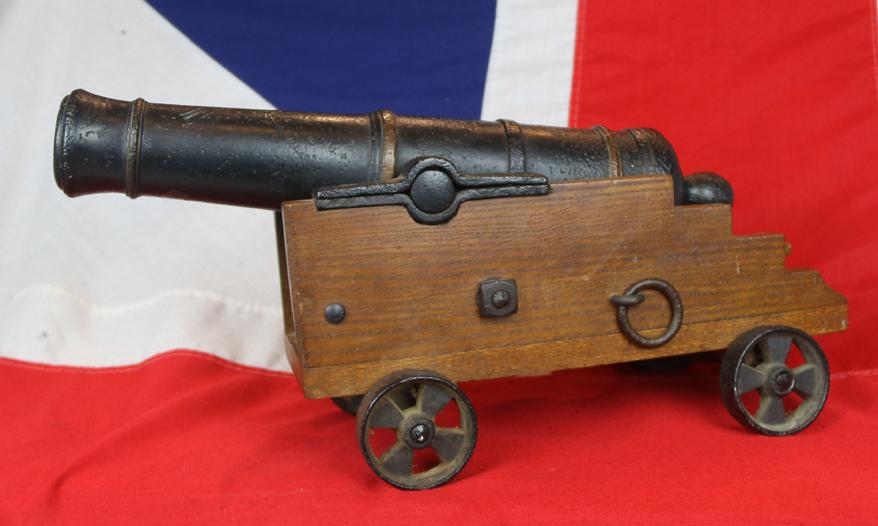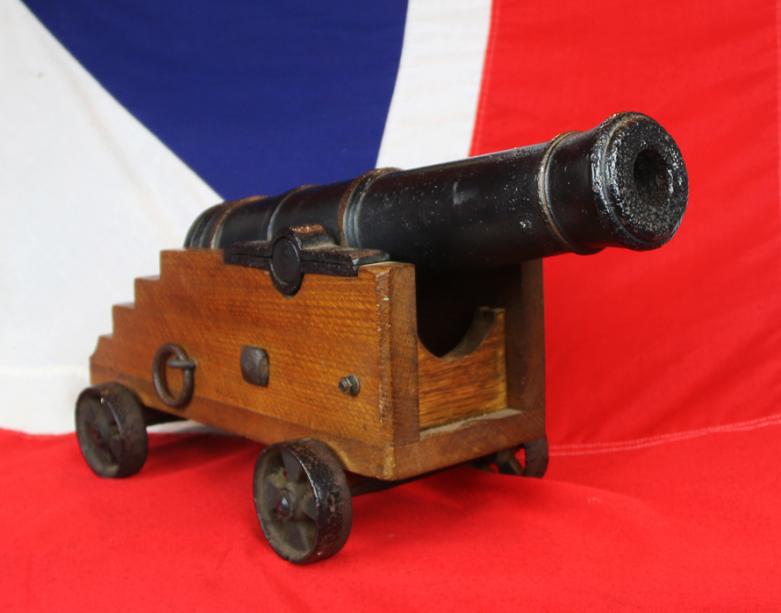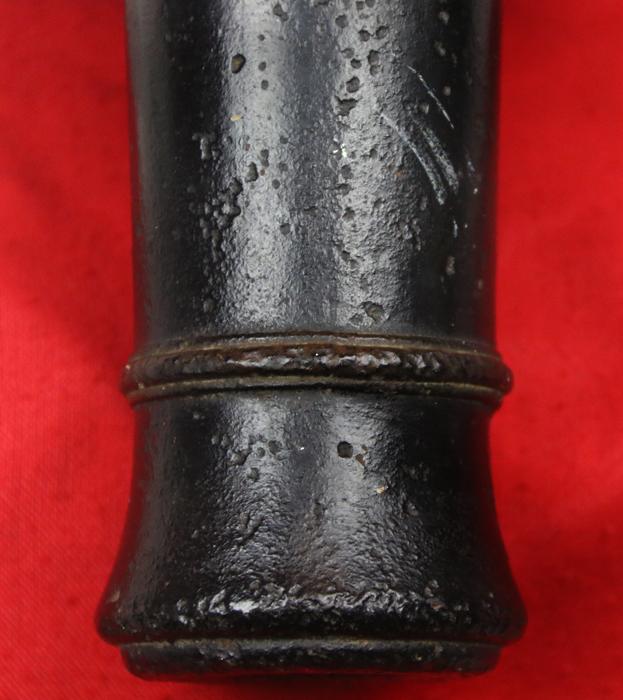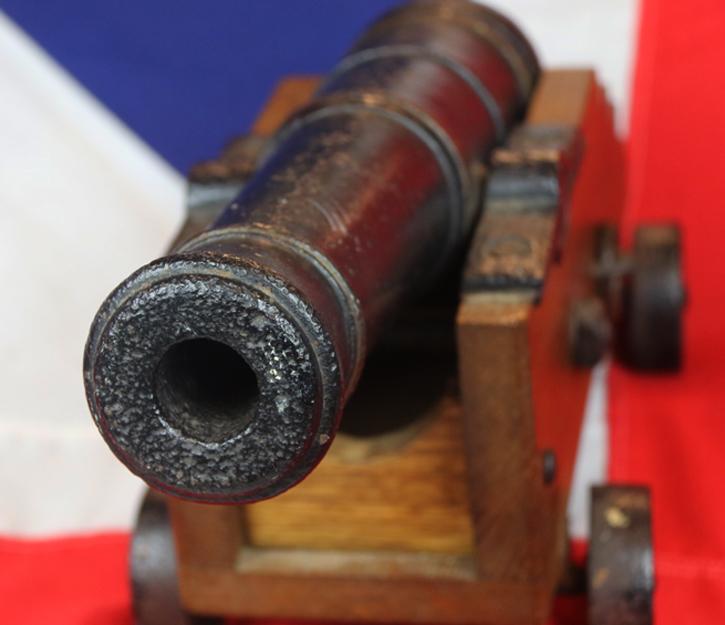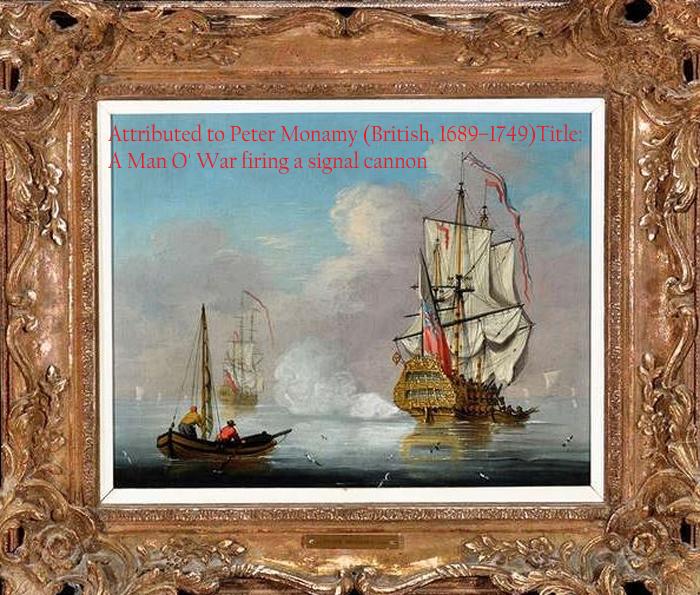A Superb, Original, Iron 18th Century Signalling & Saluting Cannon, a 1724 Armstrong Pattern Cannon, Probably From Port Royal, The Infamous Centre of Piracy in the Caribbean.
Probably the best form of original, English, Georgian period artillery cannon that would be a fabulous display piece and yet easily mobile within any home. An amazing statement and conversation piece that is also an original antique military cannon from the Anglo-French wars. Part of a stunning original selection of artefacts used in the golden age of piracy and privateers from the 1660’s to the 1740’s. Set on very finely crafted iron bound carriage partly of later date. The ironwork trunion locks and wheels are original. This wonderful cannon is of the sort were often used on ships of the line and in Royal Naval ports, to signal the fleet or the harbour if in the port, and for an official salute. The barrel bears a monogram of PR. We believe this may represent the Caribbean Royal Naval port, Port Royal, Jamaica, the centre of the Royal Navy in the Carribean from 1713 to 1905. Young King Charles IInd when Prince of Wales had around fifteen of such pieces of armament. It would look astounding on a desk, or as an embellishment to a fine and stately gentleman's library or office or indeed conference room. No better statement of power, grandeur and distinction can be reflected by this finest, original King George IIIrd period, working signal cannon based, on the great Royal Naval Cannon,The evolution of the design from 1720s, culminating in the final 1760 pattern through the later years of the 18th century. The Armstrong pattern guns became the standard issue for the Royal Navy that bestrode the great 18th century 100 gunner warships, the leviathans of the seven seas. Colonel John Armstrong took over as Surveyor General of Ordnance in 1722. Armstrong immediately set about redesigning the Borgard cannon system called culverin with modified designs in 1722 and 1724. Picture in the gallery of the firing of a similar signal cannon at sea around the time this was made, plus another original that is still fired regularly at the Cape of Good Hope.
It used to be the custom to fire salutes with the gun “shotted”, i.e. using powder and shot. When the news of the restoration of Charles II reached the fleet, which was then anchored in the Downs, Samuel Pepys recounted: "The General began to fire his guns, which he did, all that he had in the ship, and so did the rest of the commanders, which was very gallant, and to hear the bullets go hissing over our heads as we were in the boat." The Admiralty prohibition against firing salutes above Gravesend, Kent, is said to date from an occasion when a shot fired during a salute went uncomfortably close to Greenwich Palace where Queen Elizabeth I was then residing. Port Royal has one of the most interesting histories of any ports in the world. There is even speculation in pirate folklore that the infamous Blackbeard (Edward Teach) met a howler monkey, while at leisure in a Port Royal alehouse, whom he named Jefferson and formed a strong bond with during the expedition to the island of New Providence. Recent genealogical research indicates that Blackbeard and his family moved to Jamaica where Edward Teach, Jr. is listed as being a mariner in the Royal Navy aboard HMS Windsor in 1706. Port Royal benefited from this lively, glamorous infamy and grew to be one of the two largest towns and the most economically important port in the English colonies. At the height of its popularity, the city had one drinking house for every 10 residents. In July 1661 alone, 40 new licenses were granted to taverns. During a 20-year period that ended in 1692, nearly 6,500 people lived in Port Royal. In addition to prostitutes and buccaneers, there were four goldsmiths, 44 tavern keepers, and a variety of artisans and merchants who lived in 2,000 buildings crammed into 51 acres (21 ha) of real estate. 213 ships visited the seaport in 1688. The city's wealth was so great that coins were preferred for payment over the more common system of bartering goods for services.
Following Henry Morgan's appointment as lieutenant governor, Port Royal began to change. Pirates were no longer needed to defend the city. The selling of slaves took on greater importance. Upstanding citizens disliked the reputation the city had acquired. In 1687, Jamaica passed anti-piracy laws. Consequently, instead of being a safe haven for pirates, Port Royal became noted as their place of execution. Gallows Point welcomed many to their death, including Charles Vane and Calico Jack, who were hanged in 1720. About five months later, the famous woman pirate Mary Read died in the Jamaican prison in Port Royal. Two years later, 41 pirates met their death in one month.
Every single item from The Lanes Armoury is accompanied by our unique Certificate of Authenticity. Part of our continued dedication to maintain the standards forged by us over the past 100 years of our family’s trading
It is around 21 inches long overall on the carriage, 1inch bore. Weighing approx 15.8 kilos.
Code: 23350


